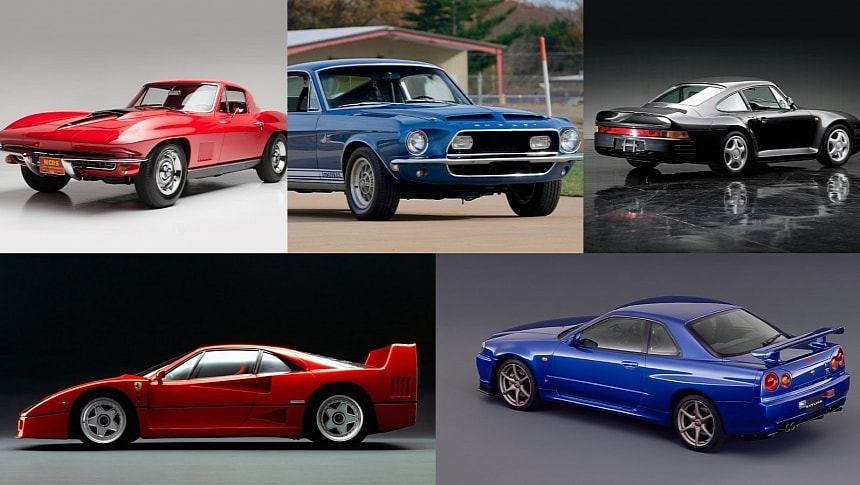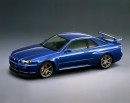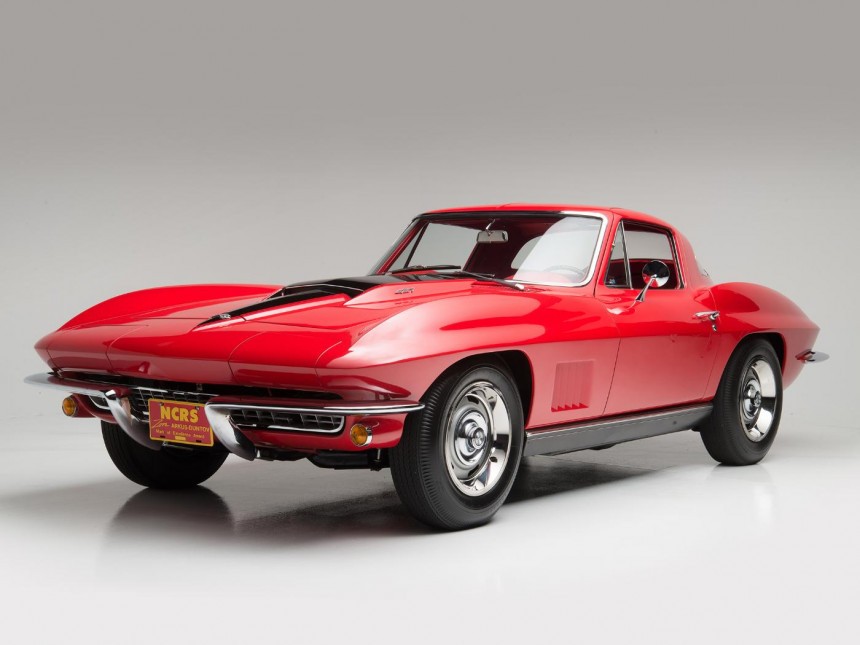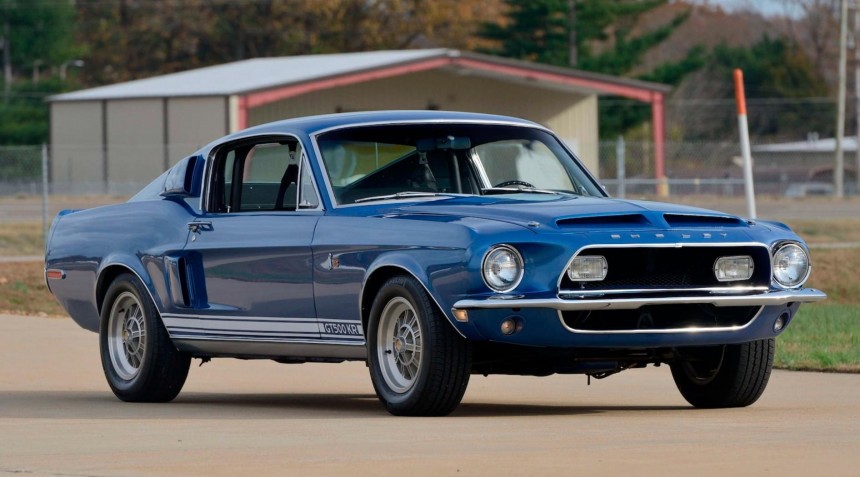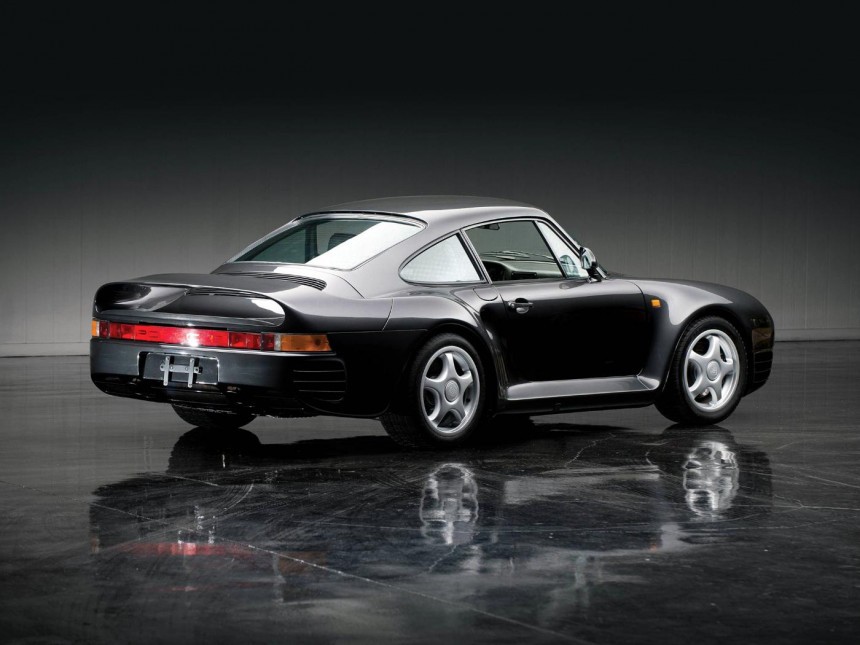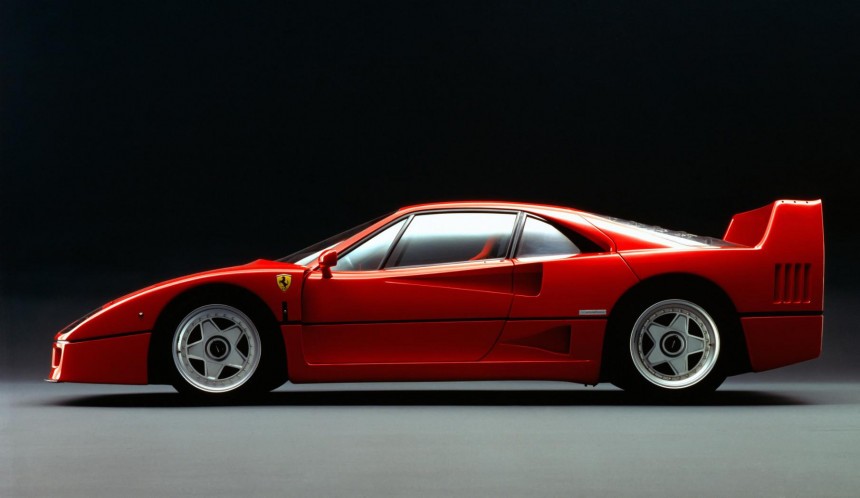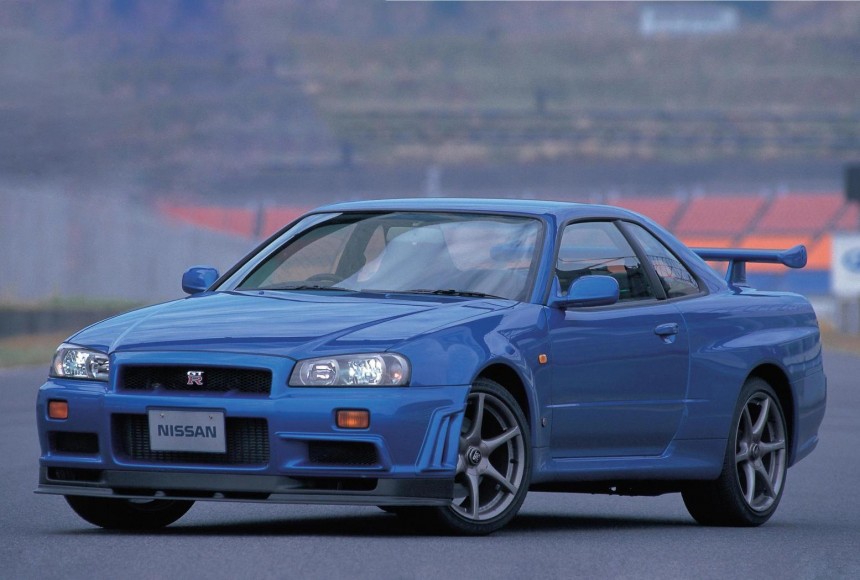Some people believe everything a carmaker tells them, which is perfectly understandable. After all, all legal businesses, including the automotive industry, are regulated by strict legislation usually aimed at protecting the consumer.
This is why it would be unthinkable for an established carmaker to go to any length to lie about their products and confuse their customers, right? Well, not exactly, as stranger things have happened.
For example, when car magazines started to kick off in the U.S., car manufacturers were known to dispatch specially prepared "ringer" vehicles for media evaluations. These were cars tuned from the factory by the automakers themselves. They were designed to significantly outshine standard models available to the general public, ensuring that journalists and critics would provide favorable reviews.
Some people say unconventional and downright misleading promotion methods are still going on today, with journalists like Chris Harris pointing their finger at car brands like Ferrari whenever they used to provide tuned press cars for comparison tests, for example.
With that in mind, I'm not trying to damage the reputation of some carmakers, but the exact opposite. I'm trying to bring out some of the coolest cars that were faster than what their manufacturers claimed, not the other way around.
Usually, when a car brand is hiding something, it's to pressure people into believing that their cars are better than they actually are. As Mark Twain once said, "Many a small thing has been made large by the right kind of advertising," but the reversal is also true.
There have been countless times when some cars have been advertised as less powerful or slower than in reality, sometimes for the weirdest reasons.
Why would a carmaker tell its customers its vehicles are worse than they really are, you ask? Well, plenty of motives come to mind, and it's a way of doing business that has been noticed since the beginning of the automobile.
Sometimes, carmakers simply undersold the output or performance of their cars to keep insurance premiums down or get them sold on markets where the legislation puts giant taxes on horsepower.
These Cinderella stories had various reasons behind their existence, ranging from modesty to luck or dishonesty. Without further ado, let's check the five most awesome underdog narratives in automotive history regarding horsepower and performance.
Probably the original poster child for 'underpromise and overdeliver,' the Corvette L88 is also one of the most sought-after Chevrolets in history.
Zora Arkus-Duntov, often referred to as the "godfather" of the Corvette, aimed to restrict the Corvette L88's ownership to racing enthusiasts only. As a result, the vehicle's power output was significantly understated to maintain its status as a racetrack weapon.
Chevrolet built just 216 units of the track-ready model, specifying in official brochures that its output was 430 horsepower. The highly modified version of Chevy's 427-cubic-inch V8 delivered up to 580 horsepower, making the L88 quick enough to run the quarter mile in the mid-to-high 11-second range.
Remember, we're talking about 1967 and a supposedly street-legal car. To further emphasize its track-ready credentials and keep regular customers away from the model, the Corvette L88 was never officially advertised by GM, and the only options available on the car were a performance suspension, a limited-slip differential, and beefier brakes. At the same time, comfort features such as a radio and A/C were not even available.
In its original year of production, Chevrolet didn't even specify horsepower or performance data for the L88. Instead, it waited a year before giving it a brochure that claimed it produced 'only' 430 HP, a fact disputed by everyone who had ever tested one.
Carroll Shelby is synonymous with Ford's best muscle car, racing at Le Mans and the fabled Cobra, and among the many Mustangs he had his name stamped on is the mighty GT500KR, whose name also speaks a Cinderella story.
Shelby's most famous Mustang-based road racer is the GT350 and all its iterations. The small-block-powered fastback was fun to drive, powerful enough, and got plenty of attention. However, Carroll had many things in mind with the Mustang platform, including making it much more powerful.
This is how the GT500 came to be, which was everything that the GT350 was not, mostly thanks to a "Ford Cobra" FE Series V8 engine with a 428 cu in (7.0 liters) displacement and two 600 CFM Holley four-barrel carburetors.
While that was all fine and dandy, beginning in April 1968, Ford started putting a new version of the 428 engine known as the 'Cobra Jet' in the Shelby Mustang, and that is how the GT500KR was born. If it wasn't apparent enough, the initials KR stood for "King of the Road," which the car definitely felt like, according to most.
While Ford rated the Cobra Jet engine at 335 HP and 440 lb-ft (597 Nm) of torque, it later emerged that it actually delivered up to 435 HP from the factory. The only visual hint of the extra power was right on the engine itself, with the die-cast aluminum valve covers spelling "Cobra Le Mans" on them to commemorate Ford's FE engine family victory against Ferrari at Le Mans with the GT40 in 1966 and 1967.
Obviously, Shelby hadn't put the actual GT40 engine in the GT500KR, but plenty of parts were similar between the two FE series powerplants.
Introduced to the world's streets and air-conditioned garages in 1986, the 959 was not just a car but a forward-thinking prototype for the future, blending state-of-the-art technology with raw power that set new benchmarks in the supercar scene of the '80s.
At least on paper, the Porsche 959 didn't push the envelope as much as other supercars regarding horsepower figures. Its main arch-enemy at the time, the striking Ferrari F40, had a much more impressive brochure regarding horsepower and torque figures, not to mention performance on paper.
Still, the racing-inspired technology of the first modern Porsche supercar featured was groundbreaking. While the somewhat flamboyant-looking bodyshell was obviously based on that of the 911, what was underneath it was space-age, as most of the car was constructed from aluminum and Kevlar composite for the body panels and chassis. At the same time, the floor was made from Nomex, a flame and heat-resistant synthetic fiber.
The Porsche 959's PSK (Porsche-Steuer Kupplung) clever all-wheel-drive system was by far the cherry on the cake and what really differentiated the supercar from anything else before it and many years after it.
The flat-six engine underneath the sculpted rear end drew heavily on the design of the 2.8-liter, 24-valve powertrain used in Porsche's 956 and 962 race cars. This foundation enabled Porsche to achieve an output of 450 PS (444 hp) and 500 Nm (369 lb-ft) of torque from the engine's compact and efficient setup.
The innovative adoption of sequential twin-turbocharging facilitated a smoother power delivery across the entire range of engine speeds. This approach significantly differed from the sharp, on-off power delivery typical of other turbocharged engines from that era, including the Ferrari F40.
These numbers gave it an official top speed of 317 kph (197 mph) and a 0 to 100 kph (62 mph) acceleration of 3.7 seconds. Despite being the fastest production car on the planet upon its introduction, the 959's official performance figures were quickly dethroned by the Ferrari F40 when it arrived a year later.
With that in mind, legendary journalist and former race car driver Paul Frere let it slip that Porsche offered a somewhat secret way for the 959 to pass the 200 mph mark easily. The non-advertised performance package allegedly upped the power figures from 444 HP to 523 HP, which allowed the top speed to increase to 336 kph (209 mph) and the 0–100 kph (0–62 mph) acceleration time to be reduced to just 3.4 seconds.
The only official and somewhat advertised way to cross that 200 mph barrier was the 959 S, which came with 508 horsepower, of which only 29 units were built.
Ferrari's final forced induction road car until the California T in 2014, the F40 was also the last car personally approved by Enzo.
Starting production a year after the Porsche 959, it came with a serious horsepower and torque bump over its Stuttgart rival, not to mention a much lower weight since it only featured an RWD system and as few comfort features for a road car as humanly imaginable.
Essentially a Group B racing car for the road, the Ferrari F40's body used panels crafted from Kevlar, carbon fiber, and aluminum. To further reduce weight, the windshield and windows were made of polycarbonate plastic instead of glass. Although all F40s had a modest air conditioning system, they lacked a sound system, door handles, glove box, leather trim, carpets, or door panels. The initial batch of 50 vehicles featured sliding Lexan windows, but subsequent models were upgraded to include wind-down windows.
Powering this featherweight was a 2.9-liter, twin-turbocharged V8 that officially delivered a healthy 478 PS (471 HP) and 577 Nm (426 lb-ft) of torque, way more than its main rival, the 959.
For reasons that can only be speculated, there were a number of people, including F40 owners, who believed that Ferrari had been a bit conservative with the official numbers for the engine. This became even more apparent when its 1990s successor, the F50, couldn't quite keep up with its lightweight predecessor in a straight line.
This was despite the Ferrari F50 officially delivering 512 HP from its F1-inspired, naturally aspirated V12, which should have made it quite a bit faster than the F40.
Some believe that the F40's twin-turbo V8 had an output closer to the 530-horsepower mark or even more. Even with the primitive turbocharging technology of the time, more boost was easily accessible with a slight miscalculation of turbo vane angles and such. Not to mention that no legislation or common sense has ever stopped Ferrari engineers from going bananas on some of their cars.
Arguably one of the two most famous Japanese sports cars of all time, alongside the Toyota Supra, the Nissan Skyline GT-R (R34) was the fifth and final generation of the GT-R nameplate to still feature the Skyline moniker.
After its introduction at the beginning of 1999, its presence in the minds of car enthusiasts worldwide was largely increased by its appearance in The Fast and the Furious movie. With that in mind, the GT-R "Godzilla" legend was already well-established by then, and the R34 enforced it even further.
As some of you know, Japanese carmakers had a so-called 'Gentleman's Agreement that lasted from 1988 all the way up to 2004, making the Skyline GT-R (R34) brochure nothing else than a book of lies.
As per the agreement, all Japanese carmakers would limit the output of their cars to 280 PS (276 HP) and their top speeds to 180 kph (112 mph) so as not to create a horsepower war in a country with such densely populated cities. A lot of JDM (Japanese Domestic Market) had broken the agreement before the R34, but most of them were limited edition models.
The R34's main weapon on track was its ATTESA E-TS all-wheel-drive system, inspired in some ways by Porsche's PSK system on the 959, but improved for a more modern age.
Even so, a lot of the model's performance was also thanks to the 2.6-liter, twin-turbocharged inline-six that officially developed the agreed-upon 276 horsepower, an identical figure to the Skyline GT-R (R32) from 1989.
Oddly enough, the R34 was quite a bit quicker than the R32 despite officially having the same output and more or less the same weight and aerodynamics.
In other words, it was a bit of an open secret that the Nissan Skyline GT-R (R34) actually delivered around 316 horsepower, or at least 40 more than the official data released by Nissan.
Keep in mind that even so, the RB26DETT inline six wasn't exactly stressed, as the engine is famous for featuring forged internals from the factory. 600+ horsepower tuned R34s with stock internals are a common occurrence nowadays.
For example, when car magazines started to kick off in the U.S., car manufacturers were known to dispatch specially prepared "ringer" vehicles for media evaluations. These were cars tuned from the factory by the automakers themselves. They were designed to significantly outshine standard models available to the general public, ensuring that journalists and critics would provide favorable reviews.
Some people say unconventional and downright misleading promotion methods are still going on today, with journalists like Chris Harris pointing their finger at car brands like Ferrari whenever they used to provide tuned press cars for comparison tests, for example.
With that in mind, I'm not trying to damage the reputation of some carmakers, but the exact opposite. I'm trying to bring out some of the coolest cars that were faster than what their manufacturers claimed, not the other way around.
Usually, when a car brand is hiding something, it's to pressure people into believing that their cars are better than they actually are. As Mark Twain once said, "Many a small thing has been made large by the right kind of advertising," but the reversal is also true.
There have been countless times when some cars have been advertised as less powerful or slower than in reality, sometimes for the weirdest reasons.
Why would a carmaker tell its customers its vehicles are worse than they really are, you ask? Well, plenty of motives come to mind, and it's a way of doing business that has been noticed since the beginning of the automobile.
Sometimes, carmakers simply undersold the output or performance of their cars to keep insurance premiums down or get them sold on markets where the legislation puts giant taxes on horsepower.
These Cinderella stories had various reasons behind their existence, ranging from modesty to luck or dishonesty. Without further ado, let's check the five most awesome underdog narratives in automotive history regarding horsepower and performance.
Chevrolet Corvette L88 - Undersold by 150 HP
Zora Arkus-Duntov, often referred to as the "godfather" of the Corvette, aimed to restrict the Corvette L88's ownership to racing enthusiasts only. As a result, the vehicle's power output was significantly understated to maintain its status as a racetrack weapon.
Chevrolet built just 216 units of the track-ready model, specifying in official brochures that its output was 430 horsepower. The highly modified version of Chevy's 427-cubic-inch V8 delivered up to 580 horsepower, making the L88 quick enough to run the quarter mile in the mid-to-high 11-second range.
Remember, we're talking about 1967 and a supposedly street-legal car. To further emphasize its track-ready credentials and keep regular customers away from the model, the Corvette L88 was never officially advertised by GM, and the only options available on the car were a performance suspension, a limited-slip differential, and beefier brakes. At the same time, comfort features such as a radio and A/C were not even available.
In its original year of production, Chevrolet didn't even specify horsepower or performance data for the L88. Instead, it waited a year before giving it a brochure that claimed it produced 'only' 430 HP, a fact disputed by everyone who had ever tested one.
Shelby GT500KR - Undersold by 100 HP
Shelby's most famous Mustang-based road racer is the GT350 and all its iterations. The small-block-powered fastback was fun to drive, powerful enough, and got plenty of attention. However, Carroll had many things in mind with the Mustang platform, including making it much more powerful.
This is how the GT500 came to be, which was everything that the GT350 was not, mostly thanks to a "Ford Cobra" FE Series V8 engine with a 428 cu in (7.0 liters) displacement and two 600 CFM Holley four-barrel carburetors.
While that was all fine and dandy, beginning in April 1968, Ford started putting a new version of the 428 engine known as the 'Cobra Jet' in the Shelby Mustang, and that is how the GT500KR was born. If it wasn't apparent enough, the initials KR stood for "King of the Road," which the car definitely felt like, according to most.
While Ford rated the Cobra Jet engine at 335 HP and 440 lb-ft (597 Nm) of torque, it later emerged that it actually delivered up to 435 HP from the factory. The only visual hint of the extra power was right on the engine itself, with the die-cast aluminum valve covers spelling "Cobra Le Mans" on them to commemorate Ford's FE engine family victory against Ferrari at Le Mans with the GT40 in 1966 and 1967.
Obviously, Shelby hadn't put the actual GT40 engine in the GT500KR, but plenty of parts were similar between the two FE series powerplants.
Porsche 959 - Some Were Undersold by 80 HP
At least on paper, the Porsche 959 didn't push the envelope as much as other supercars regarding horsepower figures. Its main arch-enemy at the time, the striking Ferrari F40, had a much more impressive brochure regarding horsepower and torque figures, not to mention performance on paper.
Still, the racing-inspired technology of the first modern Porsche supercar featured was groundbreaking. While the somewhat flamboyant-looking bodyshell was obviously based on that of the 911, what was underneath it was space-age, as most of the car was constructed from aluminum and Kevlar composite for the body panels and chassis. At the same time, the floor was made from Nomex, a flame and heat-resistant synthetic fiber.
The Porsche 959's PSK (Porsche-Steuer Kupplung) clever all-wheel-drive system was by far the cherry on the cake and what really differentiated the supercar from anything else before it and many years after it.
The flat-six engine underneath the sculpted rear end drew heavily on the design of the 2.8-liter, 24-valve powertrain used in Porsche's 956 and 962 race cars. This foundation enabled Porsche to achieve an output of 450 PS (444 hp) and 500 Nm (369 lb-ft) of torque from the engine's compact and efficient setup.
The innovative adoption of sequential twin-turbocharging facilitated a smoother power delivery across the entire range of engine speeds. This approach significantly differed from the sharp, on-off power delivery typical of other turbocharged engines from that era, including the Ferrari F40.
These numbers gave it an official top speed of 317 kph (197 mph) and a 0 to 100 kph (62 mph) acceleration of 3.7 seconds. Despite being the fastest production car on the planet upon its introduction, the 959's official performance figures were quickly dethroned by the Ferrari F40 when it arrived a year later.
With that in mind, legendary journalist and former race car driver Paul Frere let it slip that Porsche offered a somewhat secret way for the 959 to pass the 200 mph mark easily. The non-advertised performance package allegedly upped the power figures from 444 HP to 523 HP, which allowed the top speed to increase to 336 kph (209 mph) and the 0–100 kph (0–62 mph) acceleration time to be reduced to just 3.4 seconds.
The only official and somewhat advertised way to cross that 200 mph barrier was the 959 S, which came with 508 horsepower, of which only 29 units were built.
Ferrari F40 - Undersold by 60 HP
Starting production a year after the Porsche 959, it came with a serious horsepower and torque bump over its Stuttgart rival, not to mention a much lower weight since it only featured an RWD system and as few comfort features for a road car as humanly imaginable.
Essentially a Group B racing car for the road, the Ferrari F40's body used panels crafted from Kevlar, carbon fiber, and aluminum. To further reduce weight, the windshield and windows were made of polycarbonate plastic instead of glass. Although all F40s had a modest air conditioning system, they lacked a sound system, door handles, glove box, leather trim, carpets, or door panels. The initial batch of 50 vehicles featured sliding Lexan windows, but subsequent models were upgraded to include wind-down windows.
Powering this featherweight was a 2.9-liter, twin-turbocharged V8 that officially delivered a healthy 478 PS (471 HP) and 577 Nm (426 lb-ft) of torque, way more than its main rival, the 959.
For reasons that can only be speculated, there were a number of people, including F40 owners, who believed that Ferrari had been a bit conservative with the official numbers for the engine. This became even more apparent when its 1990s successor, the F50, couldn't quite keep up with its lightweight predecessor in a straight line.
This was despite the Ferrari F50 officially delivering 512 HP from its F1-inspired, naturally aspirated V12, which should have made it quite a bit faster than the F40.
Some believe that the F40's twin-turbo V8 had an output closer to the 530-horsepower mark or even more. Even with the primitive turbocharging technology of the time, more boost was easily accessible with a slight miscalculation of turbo vane angles and such. Not to mention that no legislation or common sense has ever stopped Ferrari engineers from going bananas on some of their cars.
Nissan Skyline GT-R R34 - Undersold by 40 Horsepower
After its introduction at the beginning of 1999, its presence in the minds of car enthusiasts worldwide was largely increased by its appearance in The Fast and the Furious movie. With that in mind, the GT-R "Godzilla" legend was already well-established by then, and the R34 enforced it even further.
As some of you know, Japanese carmakers had a so-called 'Gentleman's Agreement that lasted from 1988 all the way up to 2004, making the Skyline GT-R (R34) brochure nothing else than a book of lies.
As per the agreement, all Japanese carmakers would limit the output of their cars to 280 PS (276 HP) and their top speeds to 180 kph (112 mph) so as not to create a horsepower war in a country with such densely populated cities. A lot of JDM (Japanese Domestic Market) had broken the agreement before the R34, but most of them were limited edition models.
The R34's main weapon on track was its ATTESA E-TS all-wheel-drive system, inspired in some ways by Porsche's PSK system on the 959, but improved for a more modern age.
Even so, a lot of the model's performance was also thanks to the 2.6-liter, twin-turbocharged inline-six that officially developed the agreed-upon 276 horsepower, an identical figure to the Skyline GT-R (R32) from 1989.
Oddly enough, the R34 was quite a bit quicker than the R32 despite officially having the same output and more or less the same weight and aerodynamics.
In other words, it was a bit of an open secret that the Nissan Skyline GT-R (R34) actually delivered around 316 horsepower, or at least 40 more than the official data released by Nissan.
Keep in mind that even so, the RB26DETT inline six wasn't exactly stressed, as the engine is famous for featuring forged internals from the factory. 600+ horsepower tuned R34s with stock internals are a common occurrence nowadays.
